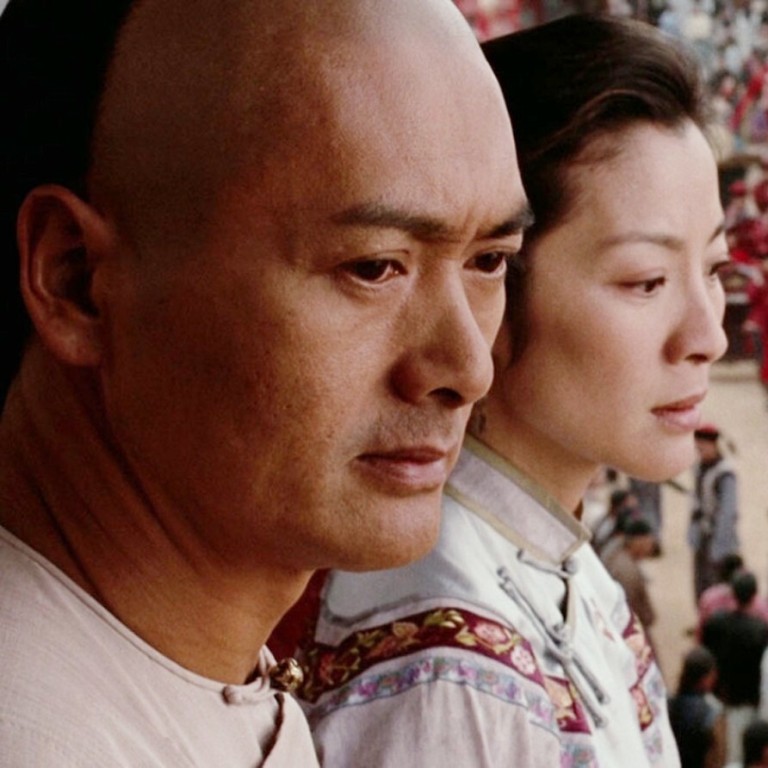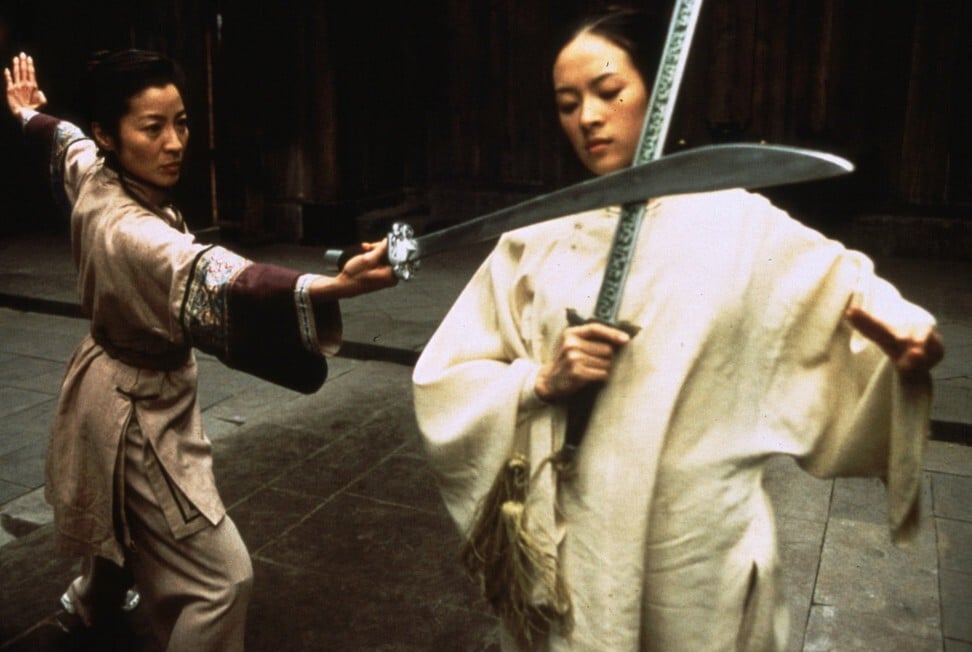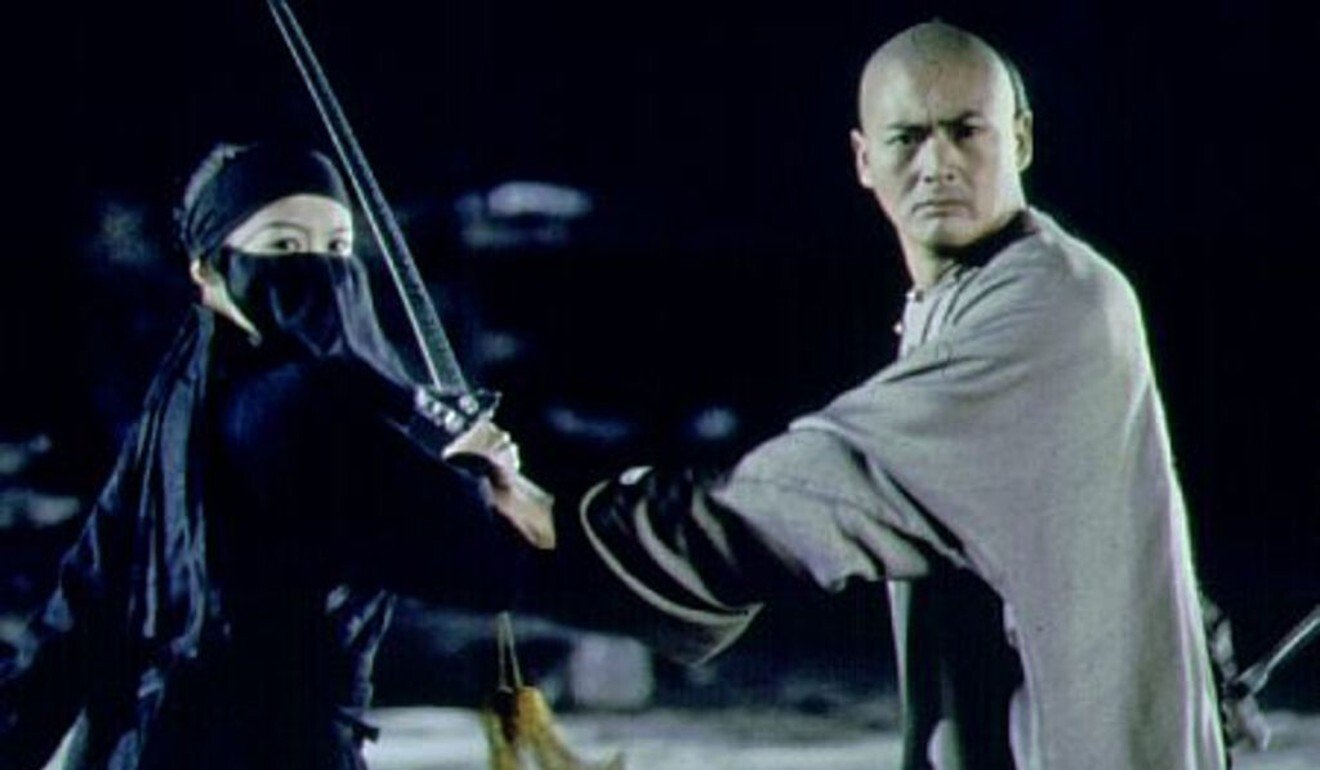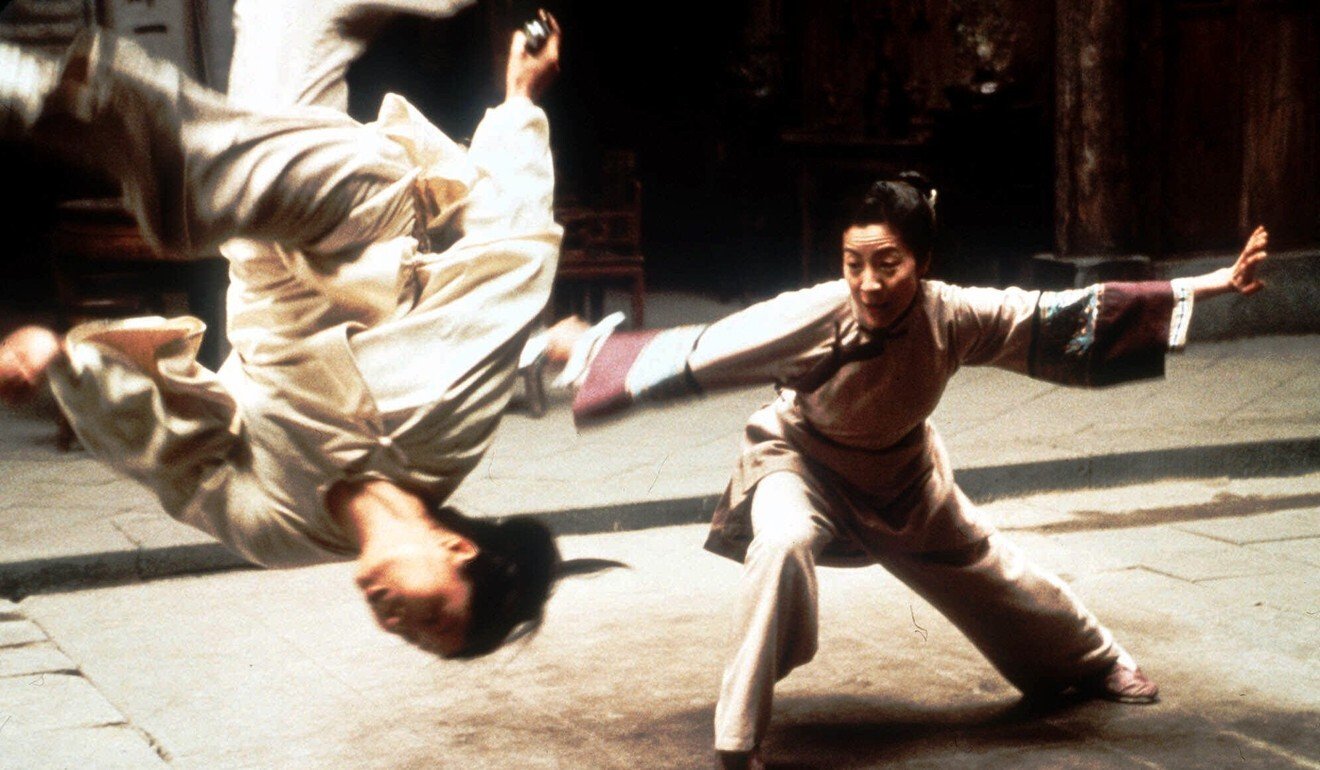
Crouching Tiger, Hidden Dragon: how Ang Lee’s martial arts classic mixes sword fighting, romance and female empowerment
- Director Ang Lee combines Western and Eastern storytelling and genres with romance, sword fighting and aerial stunts
- Zhang Ziyi and Michelle Yeoh play two skilled swordswomen, in an early nod to female empowerment in wuxia
But Crouching Tiger is nonetheless an interesting melange of East and West, an unusual combination of filmmakers and performers from different cultural backgrounds combining their skills to make a unique kind of wuxia film.
The film, which was scripted by American producer and screenwriter James Schamus, and heavily rewritten by Taiwanese writer Wang Hui-ling with Schamus’ approval, features a potpourri of themes from Hong Kong wuxia films and martial arts literature.
There is the need to avenge a murdered martial arts master, the desire to possess a masterfully wrought sword, the wish to understand a special combat manual, and an overriding theme about the need for proper training so that martial arts skills can be used to benefit, rather than destabilise, society.
But the storyline is motivated by romance – in fact, two romances, one youthful and fulfilling and one older and unspoken – something which rarely plays a part in classic martial arts films.
Although the romantic elements come from the source novel by Wang Dulu, a Chinese novelist who brought romantic melodrama into martial arts novels in the 1930s and 1940s, such deep and resonant feelings have rarely been demonstrated in a wuxia film.
Crouching Tiger also pays a lot of attention to female empowerment, an idea which earlier films with skilled women fighters never developed. In most wuxia films, women are placed below men in the Confucian hierarchy, even if they are a match for their male counterparts in combat and possess a degree of independence.
Hong Kong martial arts cinema: everything you need to know
The film has multiple storylines in the manner of classic martial arts novels, although the stories converge in the Western style rather than criss-cross in parallel streams, as in wuxia literature.

Through Jen, Li becomes aware of the presence of the vicious Jade Fox (wuxia legend Cheng Pei-pei), the renegade martial artist who killed his master. Then the story starts to coalesce around Jen’s relationship with the charismatic desert bandit Dark Cloud (Chang Chen).
Ang Lee, who is Taiwanese, says he was inspired by the martial arts novels he read as a child. “The greatest appeal of the kung fu world lies in its abstraction. It is a conceptual world based on an imaginary China. This world does not exist in reality, and is therefore free from constraints,” says Lee in the book Crouching Tiger, Hidden Dragon: A Portrait of the Ang Lee Film.

“Here I can express sentimentality: action scenes play like choreographed dances. There are no limitations. It is a free and unrestrained form of filmmaking,” Lee continues.
Two other notable scenes make ample use of wirework techniques. A sequence in which Chow fights Zhang in the treetops of a bamboo grove uses complex wires to make the performers leap through the branches. The wires were digitally removed from the shots in post-production.

The scene, which was inspired by the more grounded bamboo grove fight in King Hu’s A Touch of Zen , used 300 wires. An earlier scene, in which Yeoh pursues Zhang over some rooftops, demonstrates a beautifully fluid use of wirework techniques.
“Yuen is a master of providing thrills for the audience,” says Lee. “He knows everything about Chinese kung fu action scenes. But he’s also very cultured. He has a lot of respect for the classical martial arts style, and the traditions of Chinese opera, with its stylised movements and acrobatics.”
Yuen uses the action to express emotion, Lee says. “In Yuen’s choreography, the martial art becomes a performing art.”
The sword fighters in Crouching Tiger trained at Wudang Temple, a legendary place in the Wudang mountains in Hubei, whose exponents are sometimes presented as the enemy of Shaolin martial artists in kung fu movies.
Wudang is significantly different to Shaolin, as it’s rooted in Taosim rather than Buddhism. It is a sensible choice for a sword fighting film like Crouching Tiger.
How Ang Lee gambled on switching genres to prove himself in Hollywood
The real-life Shaolin monks – even though they were adept with swords – were known for their skill at fighting with poles. But Wudang martial artists are noted for their skill with straight swords, and developed a style known as “Wudang Sword”.
Wudang martial arts are based in esoterica and mysticism rather than the Buddhist practicalities of Shaolin, but such ideas are not explored in Crouching Tiger. In spite of its Asian context, the movie follows the Western narrative path of exploring personal relationships and individual development rather than the philosophies of jiang hu (the martial arts world.)

Schamus says that this was intentional, as Crouching Tiger was aimed at American and international audiences, and the Taiwanese rewrite was adapted into a form that would be easily accessible to mainstream Western audiences.
But the skill of the filmmakers means this unusual approach to wuxia adds to the film’s contribution to the genre, rather than detracts from it.
In this regular feature series on the best of Hong Kong martial arts cinema, we examine the legacy of classic films, re-evaluate the careers of its greatest stars, and revisit some of the lesser-known aspects of the beloved genre. Read our comprehensive explainer here.
Want more articles like this? Follow SCMP Film on Facebook
